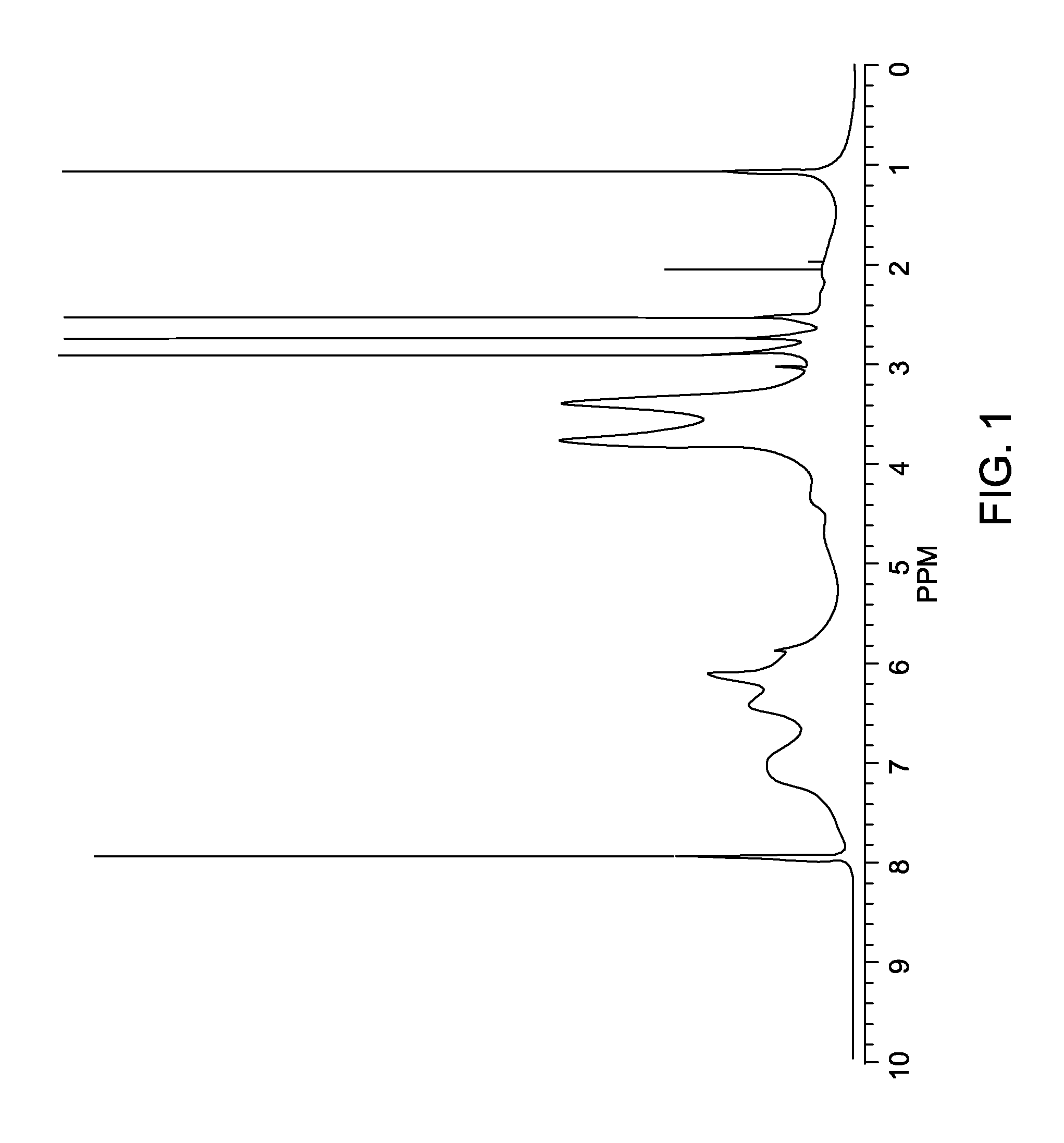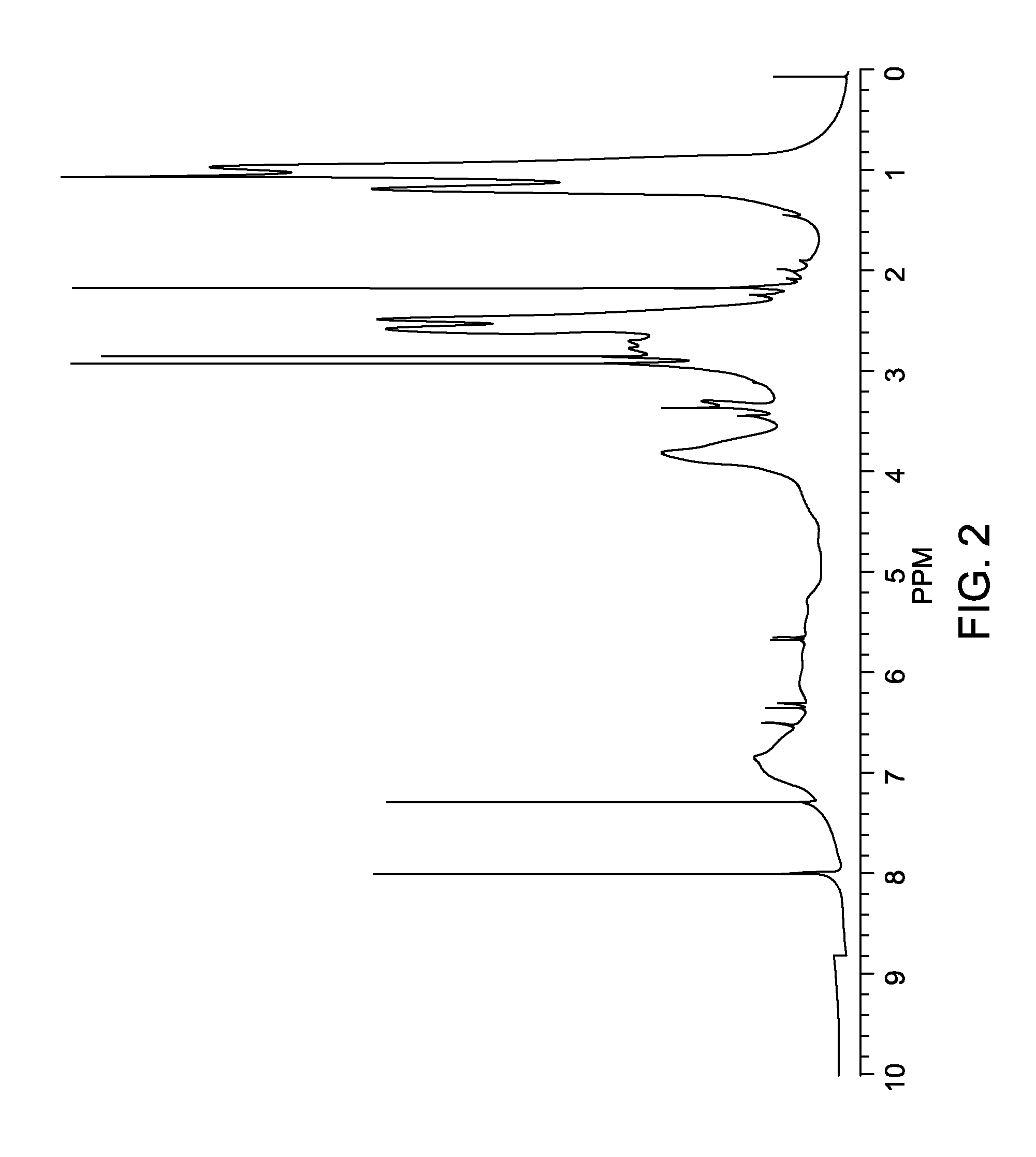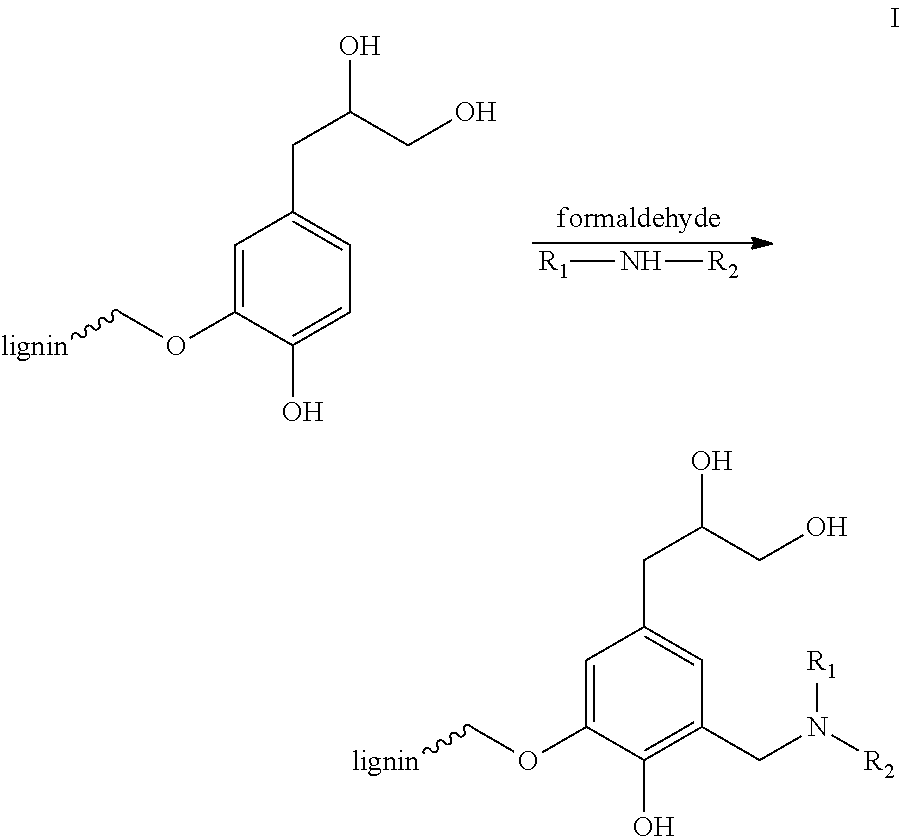Formaldehyde-free lignin-amine coagulants
a technology of lignin-amine coagulants and formaldehyde, which is applied in the field of formaldehyde-free lignin-amine coagulants, can solve the problems of large volume of sludge which needs further treatmen
- Summary
- Abstract
- Description
- Claims
- Application Information
AI Technical Summary
Benefits of technology
Problems solved by technology
Method used
Image
Examples
example 1
[0022]Kraft lignin, alkali (15 g) was dissolved in 50 ml dimethylformamide (DMF) in a glass flask with a magnetic stirrer. Triethylamine (11.86 mL, 85.0 mmol) was then added into the mixture which was then immersed in an ice-water bath. Acryloyl chloride (6.47 mL, 80.0 mmol) was slowly added into the lignin mixture at 0° C. for about 30 minutes. The reaction mixture was maintained at 0° C. for 1 hour. The reaction mixture was then brought to room temperature overnight. The solution was filtered under vacuum to remove triethylamine salt. The filtrate was placed in 600 mL isopropanol to form yellow precipitates. The yellow precipitates were filtered out and washed with isopropanol several times, yielding about 14.5 g (yield=97%) acrylate-modified lignin.
[0023]The acrylate-modified lignin in Example 1 was characterized using nuclear magnetic resonance (1H NMR in d6-DMSO) and is shown in FIG. 1. As can be seen in FIG. 1, the two small peaks at 6.1 and 6.5 ppm correspond to three protons...
example 2
[0024]The acrylate-modified lignin (2.0 g) made in Example 1 was mixed with 20 mL dimethyl sulfoxide (DMSO) in a glass flask with a magnetic stirrer. Diethylamine (0.62 mL, 6.0 mmol) was added. The mixture was stirred at 40° C. overnight. The product was precipitated out in diethyl ether, and washed twice with diethyl ether. The resulting dark brown solid was dried under vacuum, yielding about 2.10 g lignin-diethyl amine. Then hydrochloride acid aqueous solution (10 wt %) was slowly added into lignin-diethyl amine aqueous suspension until the lignin solid was fully soluble in water due to the formation of hydrochloride salt. Finally, pH of the solution was tuned to 6 for stock.
[0025]The lignin-diethyl amine in Example 2 was characterized using nuclear magnetic resonance (1H NMR in d6-DMSO) and is shown in FIG. 2. As can be seen in FIG. 2, the double bond peaks at 6.1 and 6.5 ppm disappeared, indicating the acrylate groups reacted with amine. The new peaks at 1.0, 2.5, and 2.8 ppm co...
PUM
| Property | Measurement | Unit |
|---|---|---|
| volume | aaaaa | aaaaa |
| chemical compositions | aaaaa | aaaaa |
| turbidity | aaaaa | aaaaa |
Abstract
Description
Claims
Application Information
 Login to View More
Login to View More - R&D
- Intellectual Property
- Life Sciences
- Materials
- Tech Scout
- Unparalleled Data Quality
- Higher Quality Content
- 60% Fewer Hallucinations
Browse by: Latest US Patents, China's latest patents, Technical Efficacy Thesaurus, Application Domain, Technology Topic, Popular Technical Reports.
© 2025 PatSnap. All rights reserved.Legal|Privacy policy|Modern Slavery Act Transparency Statement|Sitemap|About US| Contact US: help@patsnap.com



